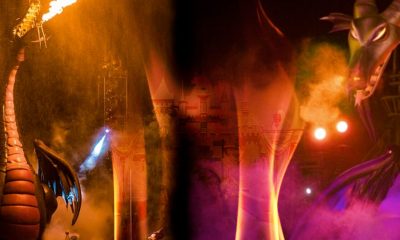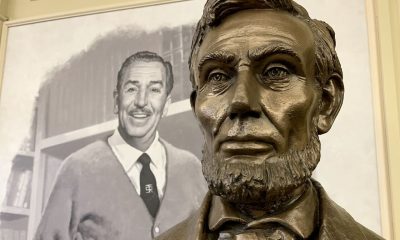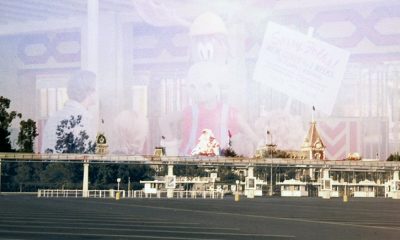Theme Parks & Themed Entertainment
You’re KNOTT going to believe where “Disney’s America” almost got built
Jim Hill reveals a BERRY interesting story about where the Imagineers were thinking about resurrecting that history theme park that the Walt Disney Company originally had wanted to build in Virginia. (What’s that? You say you don’t like puns? Well, FARM be it from me to keep on torturing you, then. Here’s the article …)
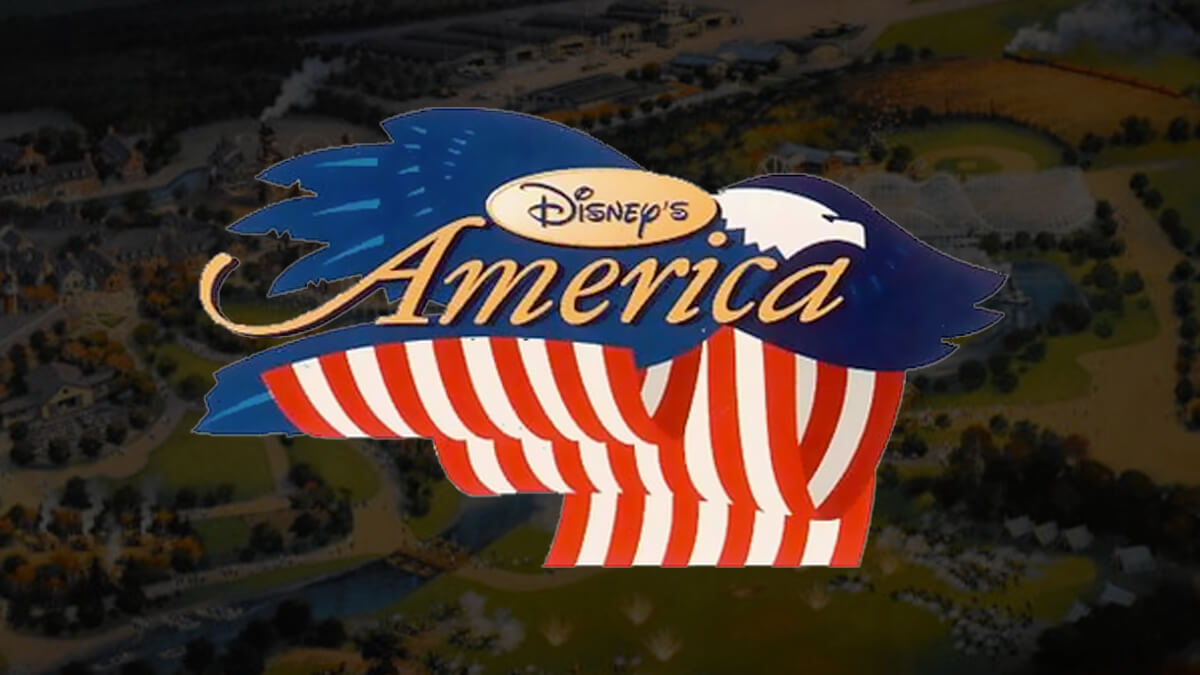
Given that last Tuesday’s story about “Disney’s American Celebration” was such a hit with JHM readers, I thought that it might be fun to reveal yet another piece of the “Disney’s America” puzzle. Tell a part of the story that happened long after most folks thought that the Walt Disney Company had abandoned all plans to build a history-based theme park.
The Search for a New “Disney’s America”
This would be the late Fall / early winter of 1994. Long after Michael Eisner had formally announced that the Disney Corporation would not be going forward with its plans for Prince William County. Long after the “Disney’s America” visitor center in Haymarket, VA. had locked its doors. And long after the folks on the Piedmont Environmental Council had held their victory celebration, thinking that they had successfully driven Mickey out of Old Dominion.
Well, as it turns out, the Mouse hadn’t actually vacated Virginia. At least not yet, anyway. For a few months more, the Imagineers wandered up and down Interstate 95. Checking out other possible construction sites for “Disney’s America.” They even considered one piece of property that was actually located inside the Beltway. A beautiful 1000-acre parcel that sat right at the edge of the historic Potomac.
Given that Disney had always wanted the 19.5 million tourists who annually visit Washington D.C. to also come to “Disney’s America,” it seemed like this waterfront parcel would have been the ideal place to build their history theme park. But — having already been savagely hammered by the press as well as by Washington’s elite for daring to try & bring a little fun to Foggy Bottom — Mickey was a very skittish mouse at that moment. Disney Company execs were concerned that — no matter where they tried to build “Disney’s America” now (Be it in Virginia, the District of Columbia and/or any other state along the Eastern Seaboard) — that DA’s critics would still rise up and loudly decry the project.
Which was why — even though the Mouse would have been able to pick up the property along the Potomac for a very affordable price — the Imagineers eventually abandoned the Beltway. Heading back to the part of the country where they knew that the Disney name was still loved & appreciated: Southern California.
Back to California – Westcot Center
Now you have to understand that — about this same time — that Disney Company executives were starting to get cold feet about Westcot Center, that $3 billion dollar project that was supposed to be built in Disneyland’s old parking lot. That state-of-the-art mix of theme park & hotels that would have turned the Anaheim theme park into a real destination resort.
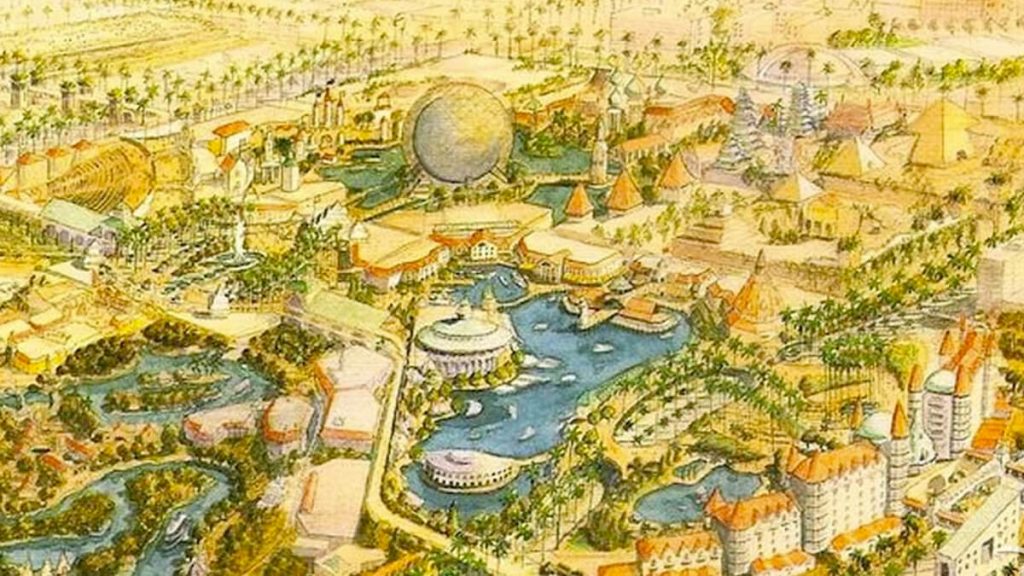
So, as Westcot’s fortunes waned, Disneyland Resort officials whined. “How are we supposed to become a destination resort like Walt Disney World if we don’t have a second gate?”
Clearly building anything in Disneyland’s old parking lot was going to be an expensive proposition. Then — when you factored in how the construction of a new Disney theme park was going to make it extremely difficult for guests to get in & out of “The Happiest Place on Earth” for 2 or 3 years — Mouse House managers began to wonder if all the cost & hassle involved with building a second Southern California gate was really going to be worth it.
“Wouldn’t it be great,” mused the higher-ups in the Team Disney Burbank building, “If we could just acquire a second theme park in Southern California? Without having to go through all the trouble of actually having to build a new one?”
Disney Buying Knott’s Berry Farm
Well, as it turns out (At this very same moment. Which was mid-to-late 1995), the Knotts family was reportedly getting tired of running their Buena Park-based theme park. Which is why the children of Walter & Cordelia Knott quietly put out the word in themed entertainment circles that they would soon be accepting bids for Knott’s Berry Farm.

And — as soon as Disney got the word that Knotts was officially up for grabs — representatives from WDI drove down to Buena Park to check the place out. To see if there might an affordable / logical way to take the Farm & its hodgepodge of rides, shows and attractions and turn it into a Disney quality theme park.
At first, this challenge seemed rather daunting. As the Imagineers wandered around the Old West Ghost Town, Fiesta Village and the park’s Roaring 20s section, the arrangement of the elements in this theme park seemed so random, so arbitrary. There really didn’t seem to be a way for WDI to turn Knotts into a place that would deliver a Disney-quality guest experience.
But then one Imagineer saw that exact replica of Philadelphia’s Independence Hall that sits out toward the theme park’s parking lot. And then — in a flash — it all came to him. The way to “fix” Knott’s Berry Farm was to — over the course of several years — slowly turn it into “Disney’s America.”
Turning Knott’s Berry Farm into “Disney’s America”
The plan — as this Imagineer laid it out — was nothing short of ingenious. It called for starting out by radically expanding the area around Knott’s Independence Hall recreation. Building many other colonial-style buildings around that hall until this area would then begin to resemble Liberty Square at WDW’s Magic Kingdom.
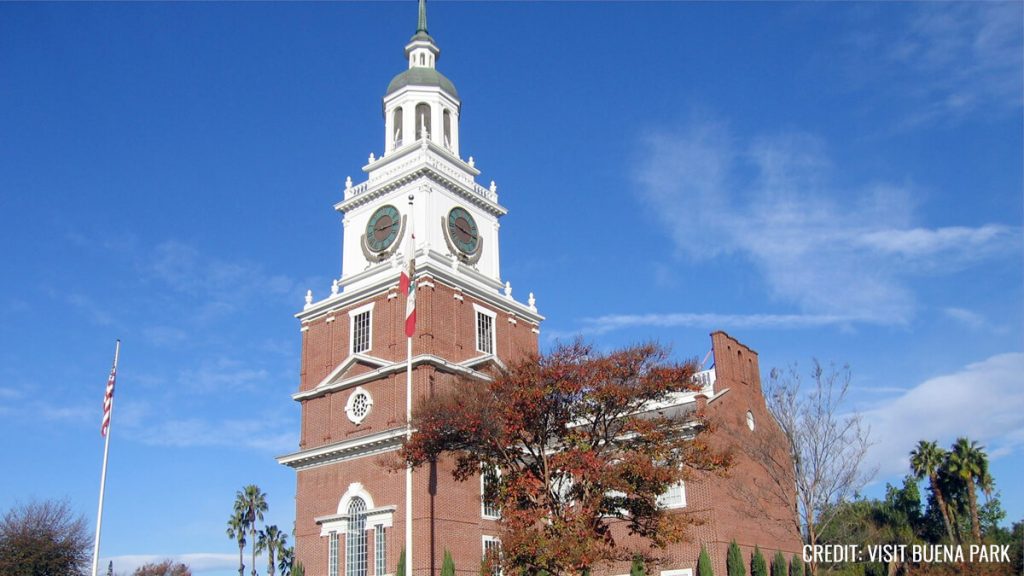
This expanded part of the theme park would then become Knott’s Berry Farm’s new entrance area. Acting much as Disneyland’s Main Street U.S.A. does to set the stage for the rest of that Anaheim theme park, KBF’s Presidents Square would now be where the new Knott’s Berry Farm / “Disney’s America” story would get started … And then gradually unfold over the next several years.
Disney’s “Presidents Square”
“Why would this part of the theme park have been called Presidents Square?,” you ask. Because the big attraction for this area was supposed to be a radically revamped version of that old Disney World favorite, “The Hall of Presidents.” An attraction that Walt Disney himself had once dreamed of bringing to Disneyland. Pretty cool, huh?
Using Knott’s Existing Rides and Structures
Anyway … Once theme park guests had grown tired of exploring Colonial America, they could have walked across an old covered bridge (which would have taken them above the theme park’s main entrance road over to where the bulk of Knott’s Berry Farm’s rides, shows & attractions were actually located) and then … Several existing parts of the Buena Park favorite would have been pressed into service to help tell the stories that the Imagineers had already wanted to tell at the Virginia version of “Disney’s America.”
Converting “Old West Ghost Town” to “Native American Territory”
Take — for example — that trio of attractions located to the back of the Old West Ghost Town (I.E. “Mystery Lodge,” “Indian Trails” and “Bigfoot Rapids”). That part of the theme park was to have become “Disney’s America” ‘s “Native American” territory. (To explain: “Disney’s America” wasn’t going to be like “Disneyland.” It wouldn’t have had “lands.” DA was supposed to have had “territories.”)
Anyway … This part of Knott’s Berry Farm was now supposed to pay tribute to America’s native people and how they lived so close to the land during the years of 1600-1810. And — as for “Bigfoot Rapids” — that whitewater raft ride would have acquired a much more serious sounding name: “The Lewis & Clark River Expedition.”
Turning “Roaring 20s” into “Enterprise”
Knott’s Roaring 20s section? … That was (over time) to have been reconfigured as “Enterprise,” a factory town that celebrated American ingenuity. This part of theme park would have eventually become home to “The Industrial Revolution,” a high speed thrill ride that was to have taken guests through a recreation of a working steel mill. Including a far-too-close encounter with a huge vat that seemed to be filled with molten metal!
Additional Themed Lands
As for the rest of Knott’s Berry Farm … With little or no change, the theme park’s Old West Ghost Town would have told the tale of our nation’s western expansion. Reflection Lake was eventually slated to become Freedom Bay. On whose shores a recreation of the Ellis Island immigrant reception center was going to be built.
One Section at a Time – Keeping the Park Open During Construction
It really was a rather clever sounding plan, don’t you think? And the best part of it was that — as the Imagineers slowly transformed Knott’s Berry Farm in a west coast version of “Disney’s America” — Disney would have still been able to keep most of that Buena Park theme park up & running, making lots of money for the Mouse. WDI would deliberately have done the project in a somewhat piecemeal fashion, working on just one section of the theme park at a time. In order to keep the operational disruptions to an absolute minimum.
Why Didn’t Disney Purchase Knott’s Berry Farm?
“So — if this was such a clever plan — why didn’t the Walt Disney Company actually go forward with it?,” you query.
Well, for one reason, Michael Eisner wasn’t all that keen on the idea of taking someone else’s old theme park and then trying to turn it into a newish Disney-style theme park. Back then, Uncle Mikey had a healthy enough ego that he wanted to make sure that whatever Disney built in Southern California had to have his own personal stamp on it.
Well, Eisner got what he wished for. Like it or not, Disney’s California Adventure and the public’s not-all-that-enthusiastic response to the Disneyland Resort’s newest theme park are now part of Michael’s legacy. One that (I’d imagine) he’d just as soon forget.
Transportation to the Park
Anyway … Getting back to the Knott’s Berry Farm / “Disney’s America” saga … Another factor that ultimately derailed this deal was that the Imagineers could never quite figure out was how they were going to safely transport those thousands of Disneyland Resort guests back and forth between the two theme parks each day.
Building a new monorail line to take guests the 7.9 miles between DL & DA would have been prohibitively expensive. Not to mention all of the right-of-way and clearance issues. The more affordable alternative was to just run buses back & forth from Anaheim to Buena Park. But (as you might imagine) the very idea that Disney was thinking about taking busloads of tourists out onto the 5 & the 91 gave the people who handled Mickey’s insurance absolute fits.
Knotts Rejected the Bid
But you want to know what really sank this plan? The Knotts children actually rejected Disney’s bid to buy the property. Not because the Mouse wasn’t offering enough money. But — rather — because Walter & Cordelia’s kids were worried that, as part of the proposed “Disney’s America” retheming, the Imagineers would wind up destroying much of what their parents had personally put into that theme park.
Knott’s Berry Farm Sold to Cedar Fair
Of course, those who know about what has happened to Knott’s Berry Farm ever since Marion, Toni, Virginia and Russell Knott sold the theme park off to Cedar Fair, L.P. in December of 1997 will appreciate the irony of that concern … Given that the Cedar Fair folks have already ripped up and/or closed down many more quintessential pieces of this Buena Park favorite that the Imagineers were ever planning to.
Of course, by the time the Knotts finally announced that they selling the Farm to Cedar Fair, L.P., the Walt Disney Company had long since committed to the construction of DCA. Then-Disneyland president Paul Pressler unveiled plans for Disney’s California Adventure in a press conference back on July 17, 1996. And the rest of that story … you know.
“Disney’s America” in California
Still, every so often, you’ll hear disgruntled Disneyana fans saying things like: “This whole California theme thing isn’t really working for me. I wish that the Imagineers would just give it up and make DCA tell a stronger, more exciting story … Like Disney’s America!”
To which I reply: “Jeese, you don’t know how close that wish came to actually coming true.”
“How close?,” you ask.
“Just 7.9 miles to the northwest,” I say.
Anyway … That’s another part of the “Disney’s America” saga that (to date) hasn’t really been told in public before.
Your thoughts?
History
The Evolution and History of Mickey’s ToonTown

Disneyland in Anaheim, California, holds a special place in the hearts of Disney fans worldwide, I mean heck, it’s where the magic began after all. Over the years it’s become a place that people visit in search of memorable experiences. One fan favorite area of the park is Mickey’s Toontown, a unique land that lets guests step right into the colorful, “Toony” world of Disney animation. With the recent reimagining of the land and the introduction of Micky and Minnies Runaway Railway, have you ever wondered how this land came to be?
There is a fascinating backstory of how Mickey’s Toontown came into existence. It’s a tale of strategic vision, the influence of Disney executives, and a commitment to meeting the needs of Disney’s valued guests.
The Beginning: Mickey’s Birthdayland
The story of Mickey’s Toontown starts with Mickey’s Birthdayland at Walt Disney World’s Magic Kingdom. Opened in 1988 to celebrate Mickey Mouse’s 60th birthday, this temporary attraction was met with such overwhelming popularity that it inspired Disney executives to think bigger. The idea was to create a permanent, immersive land where guests could step into the animated world of Mickey Mouse and his friends.
In the early ’90s, Disneyland was in need of a refresh. Michael Eisner, the visionary leader of The Walt Disney Company at the time, had an audacious idea: create a brand-new land in Disneyland that would celebrate Disney characters in a whole new way. This was the birth of Mickey’s Toontown.
Initially, Disney’s creative minds toyed with various concepts, including the idea of crafting a 100-Acre Woods or a land inspired by the Muppets. However, the turning point came when they considered the success of “Who Framed Roger Rabbit.” This film’s popularity and the desire to capitalize on contemporary trends set the stage for Toontown’s creation.
From Concept to Reality: The Birth of Toontown
In 1993, Mickey’s Toontown opened its gates at Disneyland, marking the first time in Disney Park history where guests could experience a fully realized, three-dimensional world of animation. This new land was not just a collection of attractions but a living, breathing community where Disney characters “lived,” worked, and played.
Building Challenges: Innovative Solutions
The design of Mickey’s Toontown broke new ground in theme park aesthetics. Imagineers were tasked with bringing the two-dimensional world of cartoons into a three-dimensional space. This led to the creation of over 2000 custom-built props and structures that embodied the ‘squash and stretch’ principle of animation, giving Toontown its distinctiveness.
And then there was also the challenge of hiding the Team Disney Anaheim building, which bore a striking resemblance to a giant hotdog. The Imagineers had to think creatively, using balloon tests and imaginative landscaping to seamlessly integrate Toontown into the larger park.

Key Attractions: Bringing Animation to Life
Mickey’s Toontown featured several groundbreaking attractions. “Roger Rabbit’s Car Toon Spin,” inspired by the movie “Who Framed Roger Rabbit,” became a staple of Toontown, offering an innovative ride experience. Gadget’s Go-Coaster, though initially conceived as a Rescue Rangers-themed ride, became a hit with younger visitors, proving that innovative design could create memorable experiences for all ages.
Another crown jewel of Toontown is Mickey’s House, a walkthrough attraction that allowed guests to explore the home of Mickey Mouse himself. This attraction was more than just a house; it was a carefully crafted piece of Disney lore. The house was designed in the American Craftsman style, reflecting the era when Mickey would have theoretically purchased his first home in Hollywood. The attention to detail was meticulous, with over 2000 hand-crafted, custom-built props, ensuring that every corner of the house was brimming with character and charm. Interestingly, the design of Mickey’s House was inspired by a real home in Wichita Falls, making it a unique blend of real-world inspiration and Disney magic.
Mickey’s House also showcased Disney’s commitment to creating interactive and engaging experiences. Guests could make themselves at home, sitting in Mickey’s chair, listening to the radio, and exploring the many mementos and references to Mickey’s animated adventures throughout the years. This approach to attraction design – where storytelling and interactivity merged seamlessly – was a defining characteristic of ToonTown’s success.

Executive Decisions: Shaping ToonTown’s Unique Attractions
The development of Mickey’s Toontown wasn’t just about creative imagination; it was significantly influenced by strategic decisions from Disney executives. One notable input came from Jeffrey Katzenberg, who suggested incorporating a Rescue Rangers-themed ride. This idea was a reflection of the broader Disney strategy to integrate popular contemporary characters and themes into the park, ensuring that the attractions remained relevant and engaging for visitors.
In addition to Katzenberg’s influence, Frank Wells, the then-President of The Walt Disney Company, played a key role in the strategic launch of Toontown’s attractions. His decision to delay the opening of “Roger Rabbit’s Car Toon Spin” until a year after Toontown’s debut was a calculated move. It was designed to maintain public interest in the park by offering new experiences over time, thereby giving guests more reasons to return to Disneyland.
These executive decisions highlight the careful planning and foresight that went into making Toontown a dynamic and continuously appealing part of Disneyland. By integrating current trends and strategically planning the rollout of attractions, Disney executives ensured that Toontown would not only capture the hearts of visitors upon its opening but would continue to draw them back for new experiences in the years to follow.
Global Influence: Toontown’s Worldwide Appeal
The concept of Mickey’s Toontown resonated so strongly that it was replicated at Tokyo Disneyland and influenced elements in Disneyland Paris and Hong Kong Disneyland. Each park’s version of Toontown maintained the core essence of the original while adapting to its cultural and logistical environment.
Evolution and Reimagining: Toontown Today
As we approach the present day, Mickey’s Toontown has recently undergone a significant reimagining to welcome “Mickey & Minnie’s Runaway Railway” in 2023. This refurbishment aimed to enhance the land’s interactivity and appeal to a new generation of Disney fans, all while retaining the charm that has made ToonTown a beloved destination for nearly three decades.

Dive Deeper into ToonTown’s Story
Want to know more about Mickey’s Toontown and hear some fascinating behind-the-scenes stories, then check out the latest episode of Disney Unpacked on Patreon @JimHillMedia. In this episode, the main Imagineer who worked on the Toontown project shares lots of interesting stories and details that you can’t find anywhere else. It’s full of great information and fun facts, so be sure to give it a listen!
History
Unpacking the History of the Pixar Place Hotel

Pixar Place Hotel, the newly unveiled 15-story tower at the Disneyland Resort, has been making waves in the Disney community. With its unique Pixar-themed design, it promises to be a favorite among visitors.
However, before we delve into this exciting addition to the Disneyland Resort, let’s take a look at the fascinating history of this remarkable hotel.
The Emergence of the Disneyland Hotel
To truly appreciate the story of the Pixar Place Hotel, we must turn back the clock to the early days of Disneyland. While Walt Disney had the visionary ideas and funding to create the iconic theme park, he faced a challenge when it came to providing accommodations for the park’s visitors. This is where his friend Jack Wrather enters the picture.
Jack Wrather, a fellow pioneer in the television industry, stepped in to assist Walt Disney in realizing his dream. Thanks to the success of the “Lassie” TV show produced by Wrather’s company, he had the financial means to build a hotel right across from Disneyland.
The result was the Disneyland Hotel, which opened its doors in October 1955. Interestingly, the early incarnation of this hotel had more of a motel feel than a hotel, with two-story buildings reminiscent of the roadside motels popular during the 1950s. The initial Disneyland Hotel consisted of modest structures that catered to visitors looking for affordable lodging close to the park. While the rooms were basic, it marked the beginning of something extraordinary.
The Evolution: From Emerald of Anaheim to Paradise Pier
As Disneyland’s popularity continued to soar, so did the demand for expansion and improved accommodations. In 1962, the addition of an 11-story tower transformed the Disneyland Hotel, marking a significant transition from a motel to a full-fledged hotel.
The addition of the 11-story tower elevated the Disneyland Hotel into a more prominent presence on the Anaheim skyline. At the time, it was the tallest structure in all of Orange County. The hotel’s prime location across from Disneyland made it an ideal choice for visitors. With the introduction of the monorail linking the park and the hotel, accessibility became even more convenient. Unique features like the Japanese-themed reflecting pools added to the hotel’s charm, reflecting a cultural influence that extended beyond Disney’s borders.
Japanese Tourism and Its Impact
During the 1960s and 1970s, Disneyland was attracting visitors from all corners of the world, including Japan. A significant number of Japanese tourists flocked to Anaheim to experience Walt Disney’s creation. To cater to this growing market, it wasn’t just the Disneyland Hotel that aimed to capture the attention of Japanese tourists. The Japanese Village in Buena Park, inspired by a similar attraction in Nara, Japan, was another significant spot.
These attractions sought to provide a taste of Japanese culture and hospitality, showcasing elements like tea ceremonies and beautiful ponds with rare carp and black swans. However, the Japanese Village closed its doors in 1975, likely due to the highly competitive nature of the Southern California tourist market.
The Emergence of the Emerald of Anaheim
With the surge in Japanese tourism, an opportunity arose—the construction of the Emerald of Anaheim, later known as the Disneyland Pacific Hotel. In May 1984, this 15-story hotel opened its doors.
What made the Emerald unique was its ownership. It was built not by The Walt Disney Company or the Oriental Land Company (which operated Tokyo Disneyland) but by the Tokyu Group. This group of Japanese businessmen already had a pair of hotels in Hawaii and saw potential in Anaheim’s proximity to Disneyland. Thus, they decided to embark on this new venture, specifically designed to cater to Japanese tourists looking to experience Southern California.
Financial Challenges and a Changing Landscape
The late 1980s brought about two significant financial crises in Japan—the crash of the NIKKEI stock market and the collapse of the Japanese real estate market. These crises had far-reaching effects, causing Japanese tourists to postpone or cancel their trips to the United States. As a result, reservations at the Emerald of Anaheim dwindled.
To adapt to these challenging times, the Tokyu Group merged the Emerald brand with its Pacific hotel chain, attempting to weather the storm. However, the financial turmoil took its toll on the Emerald, and changes were imminent.
The Transition to the Disneyland Pacific Hotel
In 1995, The Walt Disney Company took a significant step by purchasing the hotel formerly known as the Emerald of Anaheim for $35 million. This acquisition marked a change in the hotel’s fortunes. With Disney now in control, the hotel underwent a name change, becoming the Disneyland Pacific Hotel.
Transformation to Paradise Pier
The next phase of transformation occurred when Disney decided to rebrand the hotel as Paradise Pier Hotel. This decision aligned with Disney’s broader vision for the Disneyland Resort.
While the structural changes were limited, the hotel underwent a significant cosmetic makeover. Its exterior was painted to complement the color scheme of Paradise Pier, and wave-shaped crenellations adorned the rooftop, creating an illusion of seaside charm. This transformation was Disney’s attempt to seamlessly integrate the hotel into the Paradise Pier theme of Disney’s California Adventure Park.
Looking Beyond Paradise Pier: The Shift to Pixar Place
In 2018, Disneyland Resort rebranded Paradise Pier as Pixar Pier, a thematic area dedicated to celebrating the beloved characters and stories from Pixar Animation Studios. As a part of this transition, it became evident that the hotel formally known as the Disneyland Pacific Hotel could no longer maintain its Paradise Pier theme.
With Pixar Pier in full swing and two successful Pixar-themed hotels (Toy Story Hotels in Shanghai Disneyland and Tokyo Disneyland), Disney decided to embark on a new venture—a hotel that would celebrate the vast world of Pixar. The result is Pixar Place Hotel, a 15-story tower that embraces the characters and stories from multiple Pixar movies and shorts. This fully Pixar-themed hotel is a first of its kind in the United States.
The Future of Pixar Place and Disneyland Resort
As we look ahead to the future, the Disneyland Resort continues to evolve. The recent news of a proposed $1.9 billion expansion as part of the Disneyland Forward project indicates that the area surrounding Pixar Place is expected to see further changes. Disneyland’s rich history and innovative spirit continue to shape its destiny.
In conclusion, the history of the Pixar Place Hotel is a testament to the ever-changing landscape of Disneyland Resort. From its humble beginnings as the Disneyland Hotel to its transformation into the fully Pixar-themed Pixar Place Hotel, this establishment has undergone several iterations. As Disneyland Resort continues to grow and adapt, we can only imagine what exciting developments lie ahead for this iconic destination.
If you want to hear more stories about the History of the Pixar Place hotel, check our special edition of Disney Unpacked over on YouTube.
Stay tuned for more updates and developments as we continue to explore the fascinating world of Disney, one story at a time.
History
From Birthday Wishes to Toontown Dreams: How Toontown Came to Be

In the latest release of Episode 4 of Disney Unpacked, Len and I return, joined as always by Disney Imagineering legend, Jim Shull. This two-part episode covers all things Mickey’s Birthday Land and how it ultimately led to the inspiration behind Disneyland’s fan-favorite land, “Toontown”. But let’s not get ahead of ourselves here. It all starts in the early days at Disneyland.
Early Challenges in Meeting Mickey
Picture this: it’s the late 1970s and early 1980s, and you’re at Disneyland. You want to meet the one and only Mickey Mouse, but there’s no clear way to make it happen. You rely on Character Guides, those daily printed sheets that point you in Mickey’s general direction. But let’s be honest, it was like finding a needle in a haystack. Sometimes, you got lucky; other times, not so much.

Mickey’s Birthdayland: A Birthday Wish that Came True
Fast forward to the late 1980s. Disney World faced a big challenge. The Disney-MGM Studios Theme Park was under construction, with the company’s marketing machine in full swing, hyping up the opening of Walt Disney World’s third theme park, MGM Studios, in the Spring of 1989. This extensive marketing meant that many people were opting to postpone their family’s next trip to Walt Disney World until the following year. Walt Disney World needed something compelling to motivate guests to visit Florida in 1988, the year before Disney MGM Studios opened.
Enter stage left, Mickey’s Birthdayland. For the first time ever, an entire land was dedicated to a single character – and not just any character, but the mouse who started it all. Meeting Mickey was no longer a game of chance; it was practically guaranteed.

The Birth of Birthdayland: Creative Brilliance Meets Practicality
In this episode, we dissect the birth of Mickey’s Birthdayland, an initiative that went beyond celebrating a birthday. It was a calculated move, driven by guest feedback and a need to address issues dating back to 1971. Imagineers faced the monumental task of designing an experience that honored Mickey while efficiently managing the crowds. This required the perfect blend of creative flair and logistical prowess – a hallmark of Disney’s approach to theme park design.
Evolution: From Birthdayland to Toontown
The success of Mickey’s Birthdayland was a real game-changer, setting the stage for the birth of Toontown – an entire land that elevated character-centric areas to monumental new heights. Toontown wasn’t merely a spot to meet characters; it was an immersive experience that brought Disney animation to life. In the episode, we explore its innovative designs, playful architecture, and how every nook and cranny tells a story.

Impact on Disney Parks and Guests
Mickey’s Birthdayland and Toontown didn’t just reshape the physical landscape of Disney parks; they transformed the very essence of the guest experience. These lands introduced groundbreaking ways for visitors to connect with their beloved characters, making their Disney vacations even more unforgettable.
Beyond Attractions: A Cultural Influence
But the influence of these lands goes beyond mere attractions. Our episode delves into how Mickey’s Birthdayland and Toontown left an indelible mark on Disney’s culture, reflecting the company’s relentless dedication to innovation and guest satisfaction. It’s a journey into how a single idea can grow into a cherished cornerstone of the Disney Park experience.

Unwrapping the Full Story of Mickey’s Birthdayland
Our two-part episode of Disney Unpacked is available for your viewing pleasure on our Patreon page. And for those seeking a quicker Disney fix, we’ve got a condensed version waiting for you on our YouTube channel. Thank you for being a part of our Disney Unpacked community. Stay tuned for more episodes as we continue to “Unpack” the fascinating world of Disney, one story at a time.
-
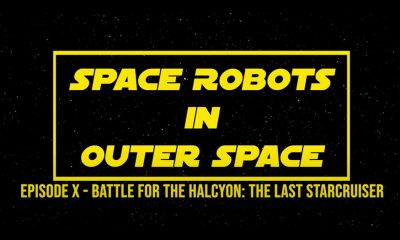
 News & Press Releases12 months ago
News & Press Releases12 months agoStar Wars Spoof: Space Robots in Outer Space Ep X: Battle for the Halcyon: The Last Starcruiser
-

 History11 months ago
History11 months ago31 Long-Gone Rides, Shows & Attractions at Disney-MGM (Hollywood Studios)
-

 News & Press Releases8 months ago
News & Press Releases8 months agoDisney Will Bring D23: The Ultimate Disney Fan Event to Anaheim, California in August 2024
-

 Theme Parks & Themed Entertainment11 months ago
Theme Parks & Themed Entertainment11 months agoFrom Aladdin to Indy – How Did We Get an Indiana Jones Stage Show at Disneyland?
-

 History3 months ago
History3 months agoFrom Birthday Wishes to Toontown Dreams: How Toontown Came to Be
-

 Theme Parks & Themed Entertainment12 months ago
Theme Parks & Themed Entertainment12 months agoHow Did We Get “Aladdin’s Oasis” at Disneyland?
-

 Theme Parks & Themed Entertainment10 months ago
Theme Parks & Themed Entertainment10 months agoWhen WDW Had a Racetrack – The Creation of the Walt Disney World Speedway
-

 Film & Movies10 months ago
Film & Movies10 months ago“Indiana Jones and the Search for Indiana Jones”



